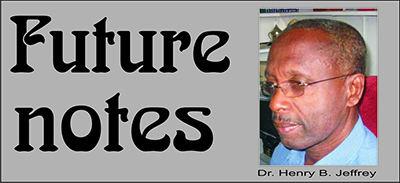
Going through their categories I concluded that elections manipulation by those the authors called ‘counterfeit democrats’ cannot be eliminated, only minimised. Here I will deal with the vicissitudes of an unusual Guyanese expression of one of their categories but for this we need to note: ‘Because the latter three options can easily backfire, the most effective autocrats don’t leave election rigging to the last minute. … [They] begin manipulating the polls well before voting begins. If these efforts work well, vote tampering and political violence never become necessary because the result has already been determined.’
With the possible exception of Cheddi Jagan, who died too early in his administration for us to make a sensible comparison, since the 1950s the major politicians in Guyana can safely be regarded as ‘counterfeit democrats’, bent upon seizing and holding on to power whatever the cost, and Guyana has experienced all the categories of electoral manipulations. Indeed, this behaviour has been normalized to a point where supporters of ruling parties view their leadership as fools if they are thrown out of office, and in the eyes of many, this is what Desmond Hoyte and Bharrat Jagdeo were.
Gerrymandering has a substantial history and was the favourite tool the British colonialists deployed against Cheddi Jagan and his PPP. For example, many rural constituencies where PPP support was greatest were substantially larger than those in the urban areas where the opposition PNC was stronger. Even so, the PPP continued to win the elections until the British decided to abandon the entire electoral system by making the unusual decision to introduce a proportional representation electoral system in a British colony.
One of the main advantages of a proportional system is that it should enable smaller parties to express democratic wishes of a more class/ethnic/geographically differentiated electorate. By making every vote count, small parties by picking up a few votes country-wide might be able to win a seat or two in parliament. However, this advantage is significantly reduced in Guyana by the entry criteria that were fixed for parties to get into the electoral race. Under the previous (1953) first-past-the-post system, all an individual or a party needed to do was to choose one constituency, pay a relatively small deposit (intended to eliminate frivolous candidates) and enter the electoral race to become a member of parliament. As a result in that election the PPP won 51.04% of the votes and 18 seats, the National Democratic Party 13.2% and 2 seats, the People’s National Party 2% with 0 seats, and independent candidates 33.8% with 4 seats.
The first proportional representation system of 1964 was engineered/rigged in favour of the then opposition to remove the PPP, but as occurred also with the 1980 constitution constructed by the PNC, once the PNC was longer allowed to directly manipulate the elections to keep itself in office, the rigged electoral system proved advantageous to the PPP and is still largely with us today. The Representation of the People Act imposes onerous conditions upon small parties and excludes independent candidates.
For example, the National Assembly has 65 members elected from lists of candidates submitted by the parties, and a party must be able to present a list of at least 42 persons. 25 of the 65 seats are designated geographical constituencies and 40 are for the purpose of topping up. A party must be able to field candidates in at least 6 of the 10 regions and the list of candidates must be backed by 300 to 330 voters for the national top up list and 150 to 175 for each geographical region. Each candidate can be on both one geographical constituency list and on the national top-up list. One third of the candidates on the top-up and geographical lists must be women and only 20% of the geographical constituencies a party is contesting can have no female candidates.
However, because of the ethnic nature of Guyana, the PR system has repercussions across many of the categories of possible fraudulent interventions mentioned above. For example, where 85% of the population votes ethnically and every vote counts, incumbent gerrymandering to gain votes is limited. Vote buying is of extremely limited utility and used mainly as an encouragement to one’s own supporters to go to the polls. Digital hacking and the spreading of fake news have limited appeal. But intimidating supporters of other parties to prevent them going to the polls, digitally hacking to change results, stuffing the ballot boxes, multiple voting and thus efforts to dupe the international community into legitimizing poor-quality polls are of paramount importance. Counterfeit democrats are mainly left with these more risky election day strategies for which control of elections commissions is critical and prior to the 1992 elections control of this body has been a major site of political dispute in post independence Guyana.
‘By the time election day arrives, there are four main rigging options available, two that can be deployed while voting occurs, and two after. During voting, candidates can employ multiple voting (getting their supporters to vote more than once) and illegitimate voting (having underage citizens or non-citizens illegally cast ballots). The other two strategies come into play once voting has taken place, and are to stuff ballot boxes with fake votes, or to make sure that the final result doesn’t reflect the actual ballots cast by tampering with the counting process. … [T]hese strategies have … one thing in common, namely that they can only work if the electoral commission is involved in or at least is willing to turn a blind eye to the rigging.’





